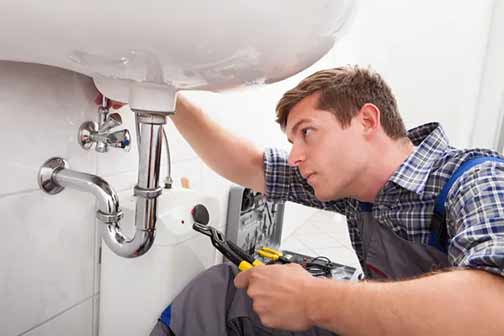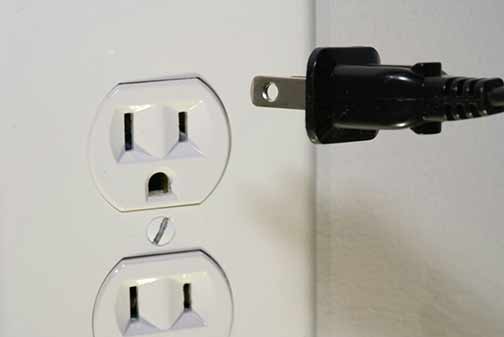
When faced with a plumbing emergency, homeowners in Chicago may feel pressured to hire the first available plumber. However, this haste can lead to hiring unlicensed plumbers, which poses significant risks. Understanding these risks is crucial in making informed decisions. Unlicensed plumbers may lack the necessary skills and qualifications, potentially causing more harm than good. Furthermore, they may not adhere to industry standards, leading to subpar work that could result in further damage and costly repairs.
Common Tactics Used by Unlicensed Plumbers in Emergency Situations
Unlicensed plumbers often employ various tactics to deceive homeowners during emergencies. These tactics can include offering unusually low prices, using high-pressure sales techniques, and providing vague or incomplete quotes. Being aware of these tactics can help homeowners recognize potential red flags and avoid falling victim to unscrupulous individuals.
Offering Unusually Low Prices to Attract Unsuspecting Homeowners
One of the most common tactics used by unlicensed plumbers is to offer extremely low prices to attract customers. While it may seem like a good deal, these low prices often come with hidden costs and subpar workmanship. Homeowners should be cautious of prices that seem too good to be true. In many cases, unlicensed plumbers may use inferior materials or cut corners to keep costs low, resulting in poor-quality repairs that can lead to more significant issues down the line.
Using High-Pressure Sales Techniques to Secure Immediate Jobs
Unlicensed plumbers may use high-pressure sales techniques to convince homeowners to hire them on the spot. They may create a sense of urgency, claiming that immediate action is necessary to prevent further damage. Homeowners should take the time to research and verify the plumber’s credentials before making a decision. High-pressure tactics can lead to hasty decisions that may not be in the homeowner’s best interest, resulting in subpar work and potential safety hazards.
Providing Vague or Incomplete Quotes to Conceal Hidden Costs
Another tactic used by unlicensed plumbers is to provide vague or incomplete quotes. This allows them to add unexpected charges later on, leading to higher costs than initially agreed upon. Homeowners should insist on detailed, written quotes that outline all costs and services before agreeing to any work. A clear and comprehensive quote helps ensure transparency and prevents unanticipated expenses that can strain budgets and cause frustration.
The Importance of Hiring Licensed Plumbers for Quality Assurance
Hiring licensed plumbers is essential for ensuring quality workmanship and protecting your home. Licensed plumbers have undergone the necessary training and certification processes, which means they are knowledgeable and skilled in their trade. Additionally, licensed plumbers in Chicago are required to adhere to industry standards and regulations, providing homeowners with peace of mind. By choosing a licensed professional, homeowners can be confident that the work will be completed to a high standard and comply with all relevant codes and regulations.

By choosing a licensed professional, homeowners can be confident that the work will be completed to a high standard and comply with all relevant codes and regulations.
Verifying a Plumber’s License Through Official Channels
Before hiring a plumber, homeowners should verify their license. This can be done by checking with the Illinois Department of Public Health or the City of Chicago’s Department of Buildings. These agencies maintain databases of licensed plumbers, making it easy for homeowners to confirm a plumber’s credentials. Verifying a plumber’s license ensures that the individual has met the necessary qualifications and is authorized to perform plumbing work in the area.
Checking for Insurance and Bonding for Added Protection
In addition to verifying a plumber’s license, homeowners should also check for insurance and bonding. Insurance protects homeowners in case of accidents or damages that occur during the job, while bonding provides financial protection if the plumber fails to complete the work or meet contractual obligations. Ensuring that a plumber is both insured and bonded adds an extra layer of security and helps protect homeowners from potential financial losses.
Seeking Recommendations and Reviews for Reliable Service Providers
One of the best ways to find reputable plumbers is through recommendations and reviews. Homeowners can ask friends, family, and neighbors for referrals or check online review platforms. Positive reviews and testimonials can provide valuable insights into a plumber’s reliability and quality of work. By gathering information from trusted sources, homeowners can make more informed decisions and choose professionals with a proven track record of excellence.
Requesting References from Previous Clients for Firsthand Feedback
Homeowners should not hesitate to ask potential plumbers for references from previous clients. Speaking with past customers can provide firsthand information about the plumber’s performance, professionalism, and adherence to timelines and budgets. References offer valuable insights into a plumber’s work ethic and reliability, helping homeowners make more informed choices and avoid potential pitfalls.
Ensuring a Written Contract for Clear Terms and Conditions
A written contract is essential for protecting both the homeowner and the plumber. The contract should outline the scope of work, costs, timelines, and any warranties or guarantees. Having a written agreement helps prevent misunderstandings and provides a reference point in case of disputes. A detailed contract ensures that both parties are on the same page and helps establish clear expectations for the project.

If something feels off or too good to be true, it is essential to take a step back and thoroughly vet the plumber before proceeding.
Recognizing Red Flags That Indicate Unlicensed or Unreliable Plumbers
Homeowners should be vigilant and recognize red flags that may indicate an unlicensed or unreliable plumber. These red flags can include a lack of proper identification, refusal to provide a written contract, and reluctance to share references or proof of insurance. Trusting your instincts and being cautious can help avoid potential issues. If something feels off or too good to be true, it is essential to take a step back and thoroughly vet the plumber before proceeding.
Understanding the Consequences of Hiring Unlicensed Plumbers
Hiring unlicensed plumbers can lead to several negative consequences, including poor workmanship, safety hazards, and legal issues. Unlicensed plumbers may not follow industry standards, resulting in substandard repairs that can cause further damage. Additionally, homeowners may be held liable for any accidents or injuries that occur during the job. The lack of proper qualifications and adherence to regulations can result in dangerous situations and costly repairs.
Protecting Your Home and Investment Through Due Diligence
By taking the time to research and hire licensed, insured, and reputable plumbers, homeowners can protect their homes and investments. Quality plumbing work ensures the longevity and functionality of plumbing systems, preventing costly repairs and potential damage in the future. Investing in professional plumbing services helps maintain the integrity of the home and provides peace of mind knowing that the work is done correctly.
Conclusion: Making Informed Decisions to Safeguard Your Home
In emergency situations, it can be tempting to hire the first available plumber. However, homeowners in Chicago must be cautious and take steps to ensure they hire licensed and reputable professionals. By understanding the tactics used by unlicensed plumbers and following the prevention tips outlined in this article, homeowners can make informed decisions and safeguard their homes. Taking the time to verify credentials, seek recommendations, and insist on written agreements can help prevent potential issues and ensure quality plumbing work.






















